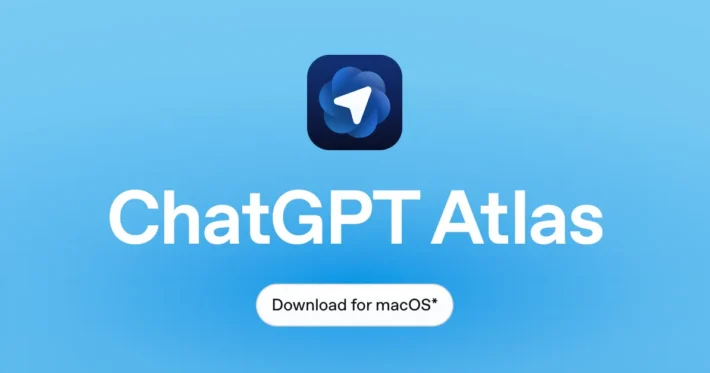How To Build Custom GPTs — a practical guide in 2025

Custom GPTs (also called “GPTs” or “Custom Assistants”) let individuals and teams create tailored versions of ChatGPT that embed instructions, reference files, tools, and workflows. They’re easy to start with but have important limitations, risks, and choices you need to know about before you design, publish, or integrate one.
What is a custom GPT ?
Custom GPTs (often just called “GPTs” inside ChatGPT) are tailored versions of ChatGPT you can create without writing code. They combine system instructions, specialized knowledge (files, URLs, embeddings), and optional tool integrations to behave like a domain-specific assistant — e.g., a legal-summarizer, product-design partner, interview coach, or internal helpdesk bot. OpenAI designed the GPT creation experience to be accessible via a visual builder: you tell the builder what you want and it scaffolds the assistant, while a Configure tab lets you add files, tools, and guardrails.
Why build one?
Custom GPTs let teams and individuals:
- Capture repeatable workflows (project onboarding, content templates).
- Enforce tone/brand guidelines and Q\&A policies.
- Surface proprietary knowledge (upload product docs, policies).
- Reduce friction: users interact with a knowledgeable assistant rather than repeating instructions each session.
Below I’ll walk through a professional, practical guide: step-by-step creation, configuration and publishing, integration patterns, testing and governance.
How do I create a custom GPT step-by-step?
Step 1: Plan the assistant’s purpose and constraints
Decide the primary tasks, the target users, and what the assistant must never do (for safety/compliance). Example: “A contract summarizer for legal ops that never gives legal advice and flags ambiguous clauses.” Clarifying this upfront makes your instruction and testing faster.
Step 2: Open the GPT Builder
From ChatGPT’s left sidebar go to GPTs → Create (or visit chatgpt.com/gpts). The builder typically shows a “Create” (authoring) tab, a “Configure” tab for metadata and assets, and a “Preview” tab for live testing.
Step 3: Define system instructions and persona
In the Configure tab provide concise but comprehensive instructions:
- Role: what the assistant is (e.g., “Contract summarizer for procurement teams”).
- Behavior: tone, verbosity, and constraints (e.g., “Always ask for document scope before summarizing”).
- Forbidden actions: what to refuse (e.g., “Do not create legal advice; always recommend an attorney”).
These instructions form the backbone of consistent behavior.
Step 4: Upload knowledge and examples
Attach reference files (PDFs, docs), FAQs, and exemplar Q→A so the GPT can base answers on your data. Keep each file focused and well-structured—large, noisy documents can dilute performance. Uploaded knowledge helps the assistant produce consistent, factual responses during sessions (but note the memory caveats discussed later).
Step 5: Add Actions (connect APIs or tools) if needed
If your assistant needs external data (inventory checks, calendar access, CRM lookups), configure Custom Actions (also called tools). An action is a defined web API call the assistant can make during a conversation. Use them to fetch live data, run transactions, or enrich responses. Actions expand usefulness but increase complexity and security requirements.
- Plugins or callable web APIs for real-time data (inventory, calendars).
- Custom actions via webhook endpoints (trigger builds, send tickets).
- Code execution or advanced tools for math, file parsing, or database lookups.
Step 6: Select model and performance tradeoffs
OpenAI allows creators to select from different ChatGPT models (including various GPT-5 family and more compact options) to balance cost, speed, and capability. Choose a model based on the task complexity: large models for nuanced summarization or reasoning; smaller/cheaper models for simple Q&A. Expanded model support for custom GPTs—pay attention to what models your account can use.
Step 7: Preview, test, and iterate
Use the Preview tab to simulate real user prompts. Test edge cases, adversarial prompts, and error paths (e.g., missing data or ambiguous user intent). Iterate on the instructions, files, and actions until behavior is reliable.
Track:
- Accuracy of answers (are facts grounded to uploaded files?)
- Tone and format (does it produce deliverables in expected structure?)
- Safety responses (does it refuse or escalate when asked for prohibited actions?)
Step 8: Publish, share, or keep private
You can publish your GPT to:
- Your organization’s private catalog (Teams/Enterprise),
- The public GPT Store (if you want broader discovery),
- Or keep it private for internal use only.
If publishing publicly, follow disclosure rules: state if it uses external APIs, collects data, or has limits. The GPT Store enables discovery and (in some periods) revenue programs for creators.
What external APIs can you use to integrate a custom GPT?
There are several integration patterns and many APIs you can plug into a custom GPT (or into an app that wraps a GPT). Pick based on the capability you need — live data / actions, retrieval (RAG) / knowledge, automation / orchestration, or app-specific services.
1) OpenAI / ChatGPT Plugins (OpenAPI + manifest) — for model-initiated API calls
What it is: a standardized way to expose your REST API to ChatGPT via an ai-plugin.json manifest + an OpenAPI spec so the model can call your endpoints during a conversation. Use this when you want the GPT to fetch live information or take actions (book a flight, query inventory, run a search).
When to use it: you want the GPT to request data or perform an action during a chat turn (the model chooses which API to call). Typical examples: ticketing systems, product catalogs, pricing engines, custom search endpoints.
Pros:
- Natural LLM→API flow (model chooses and reasons which calls to make).
- Uses OpenAPI, so it integrates with standard API tooling.
Cons: - Requires building a secure API, manifest and auth flows (OAuth or API-key).
- Security surface area — follow best practices for least privilege.
2) OpenAI Assistants / Responses API & function-calling
What it is: OpenAI’s Assistants/Responses/Function-calling features let you build assistants inside your own app by programmatically composing instructions, tools, and function definitions. Use this when your application needs deterministic orchestration — your app calls the model, the model returns a function call, your app executes it, and you feed the result back.
When to use it: you need tighter control over workflow, want to mediate tool calls in your backend, or want to integrate models with your existing APIs while logging and validating every external call.
Pros:
- Full control and easier to enforce validation and auditing.
- Works well with server-side orchestration and security controls.
Cons: - Your app must implement the orchestration layer (more dev work).
- for programmatic control
3) Retrieval / RAG APIs (vector DBs + embedding services)
What it is: Retrieval-augmented generation (RAG) uses an embeddings engine + vector database to provide context to the model. Common choices: Pinecone, Weaviate, Chroma, Milvus — these are used to index your PDFs, docs and return the most relevant passages to the model at request time. This is the standard way to give GPTs reliable, private knowledge at scale.
When to use it: you need the GPT to answer from large corpora of internal documents, product manuals, contracts, or to have “memory” stored externally.
Pros:
- Greatly reduces hallucination by grounding answers.
- Scales to large corpora.
Cons: - Requires ETL (chunking, embedding, indexing) and a retrieval layer.
- Latency and cost considerations for very large datasets.
- for grounding GPTs in your docs
4) No-code / automation platforms (Zapier, Make/Integromat, n8n, Power Automate)
What it is: Use automation platforms to connect ChatGPT (or your backend that calls ChatGPT) with hundreds of third-party APIs (Sheets, Slack, CRM, email). These services let you trigger workflows (for example: on a chat result, call a Zap that posts to Slack, updates Google Sheets, or creates a GitHub issue).
When to use it: you want low-effort integrations, quick prototypes, or to connect many SaaS endpoints without building glue code.
Pros:
- Fast to wire up; no heavy backend needed.
- Great for internal automations and notifications.
Cons: - Less flexible and sometimes slower than custom backends.
- Must carefully manage credentials and data residency.
5) App-specific APIs and webhooks (Slack, GitHub, Google Workspace, CRMs)
What it is: Many product integrations are simply the platform APIs you already know — Slack API for conversations, GitHub API for issues/PRs, Google Sheets API, Salesforce API, calendar APIs, etc. A GPT or your orchestration layer can call those APIs directly (or via plugins/zaps) to read/write data. Example: a GPT that triages issues and opens PRs via the GitHub API.
When to use it: you need the assistant to interact with a specific SaaS (posting messages, opening tickets, reading records).
Pros:
- Direct capability to act in your tools.
Cons: - Every external integration increases auth and security requirements.
6) Middleware / orchestration libraries and agent frameworks (LangChain, Semantic Kernel, LangGraph, etc.)
What it is: Libraries that simplify building LLM apps by providing connectors to vector DBs, tools, and APIs. They help structure prompts, handle retrieval, chain calls, and provide observability. LangChain (and related frameworks) are commonly used to connect models to external APIs and RAG pipelines.
When to use it: you’re building a production app, need reusable components, or want to manage tool usage, retries, and caching in one place.
Pros:
- Speeds up development; many built-in connectors.
Cons: - Adds a dependency layer that you must maintain.
Suggested integration patterns (quick recipes)
- Plugin-first (best for model-driven workflows): Implement a secure REST API → publish OpenAPI spec + ai-plugin.json → allow GPT (plugin-enabled) to call it during chats. Good for product lookups and actions.
- App-orchestrated (best for strict control): Your app collects user input → calls the OpenAI Assistants/Responses API with tools/function definitions → if the model requests a function, your app validates and executes against your internal APIs (or calls other services) and returns results to the model. Good for auditability and safety.
- RAG-backed (best for knowledge-heavy GPTs): Index documents into a vector DB (Pinecone/Weaviate/Chroma) → when user asks, retrieve top passages → pass retrieved text to the model as context (or use a retrieval plugin) to ground answers.
- Automation bridge (best for glueing SaaS): Use Zapier / Make / n8n to bridge GPT outputs to SaaS APIs (post to Slack, create tickets, append rows). Good for non-engineer-friendly integrations and quick automations.
How do I design secure tool calls?
- Use least privilege credentials (read-only where possible).
- Validate all external responses before trusting them for critical decisions.
- Rate-limit and monitor tool usage, and log API calls for audit.
GPT vs plugin: A custom GPT is a configured assistant inside ChatGPT (no code required), while a plugin is an integration that allows ChatGPT to call external APIs. You can combine both: a GPT with built-in instructions + attached plugin hooks to fetch real-time data or take actions.
How should I test, measure, and govern a deployed GPT?
What tests should I run before rollout?
- Functional tests: do outputs match expectations across 50–100 representative prompts?
- Stress tests: feed adversarial or malformed input to check failure modes.
- Privacy tests: ensure the assistant does not leak internal doc snippets out to unauthorized users.
Which metrics matter?
- Accuracy/precision against a labeled set.
- Prompt success rate (percentage of queries that returned actionable output).
- Escalation rate (how often it failed and required human handoff).
- User satisfaction via short in-chat rating prompts.
How to maintain governance?
- Maintain a changelog for instruction changes and file updates.
- Use role-based access to edit/publish GPTs.
- Schedule periodic re-audit for data sensitivity and policy alignment.
Important limitations & gotchas you must know
- Custom GPTs can call APIs during a session (via plugin/actions), but there are limitations on pushing data into a Custom GPT “at rest.” In practice this means you can have GPT-initiated calls (plugins or functions) or your app can call the model via the API, but you generally can’t asynchronously push data into a hosted Custom GPT instance like firing external webhooks that the GPT will automatically consume later. Check the product documentation and community threads for up-to-date behavior.
- Security & privacy: plugins and API integrations increase attack surface (OAuth flows, data exfiltration risk). Treat plugin endpoints and third-party tools as untrusted until validated, and follow least-privilege auth + logging. Industry reporting and audits have highlighted plugin security risks; treat this seriously.
- Latency & cost: live API calls and retrieval add latency and tokens (if you include retrieved text in prompts). Architect for caching and limit the scope of retrieved context.
- Governance: for internal GPTs, control who can add plugins, which APIs can be called, and maintain an approval/audit process.
How can I optimize prompts, reduce hallucinations, and improve reliability?
Practical techniques
- Anchor answers to sources: ask the GPT to cite the document name and paragraph number when drawing facts from uploaded files.
- Require stepwise reasoning: for complex decisions, ask for a short chain of thought or numbered steps (then summarize).
- Use verification steps: after the GPT answers, instruct it to run a short verification pass against attached files and return a confidence score.
- Limit inventiveness: add an instruction like “If the assistant is unsure, respond: ‘I don’t have enough info — please upload X or ask Y.’”
Use automated tests and human review loops
- Build a small corpus of “golden prompts” and expected outputs to run after any instruction change.
- Use a human-in-the-loop (HITL) for high-risk queries during early rollout.
Final recommendations
If you’re just starting, pick a narrow use case (e.g., internal onboarding assistant or code reviewer) and iterate quickly using the GPT Builder’s conversational Create flow. Keep knowledge sources concise and versioned, build a small suite of tests, and enforce strict permissioning. Be mindful of the memory limitation for custom GPTs today — use Projects and uploaded references to provide continuity until persistent memory options evolve.
Getting Started
CometAPI is a unified API platform that aggregates over 500 AI models from leading providers—such as OpenAI’s series, Google’s Gemini, Anthropic’s Claude, Midjourney, Suno, and more—into a single, developer-friendly interface. By offering consistent authentication, request formatting, and response handling, CometAPI dramatically simplifies the integration of AI capabilities into your applications. Whether you’re building chatbots, image generators, music composers, or data‐driven analytics pipelines, CometAPI lets you iterate faster, control costs, and remain vendor-agnostic—all while tapping into the latest breakthroughs across the AI ecosystem.
To begin, explore the chatgpt model ’s capabilities in the Playground and consult the API guide for detailed instructions. Before accessing, please make sure you have logged in to CometAPI and obtained the API key. CometAPI offer a price far lower than the official price to help you integrate.
Ready to Go?→ Sign up for CometAPI today !



